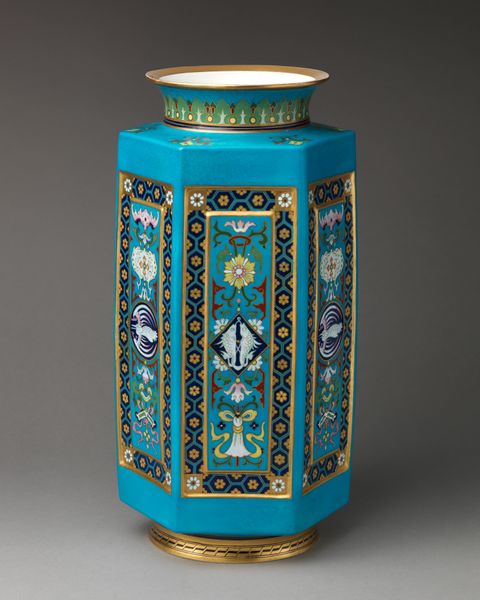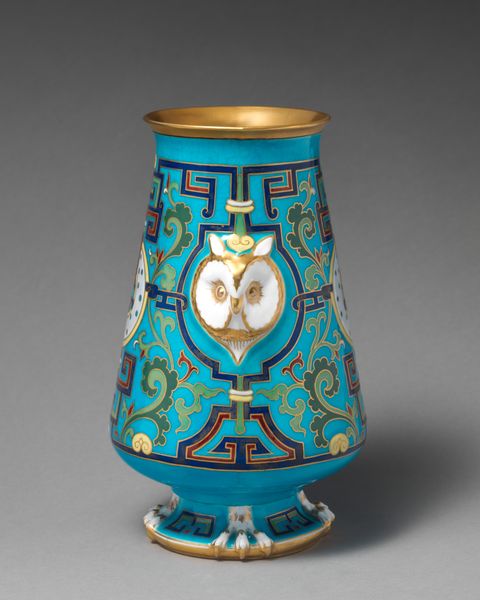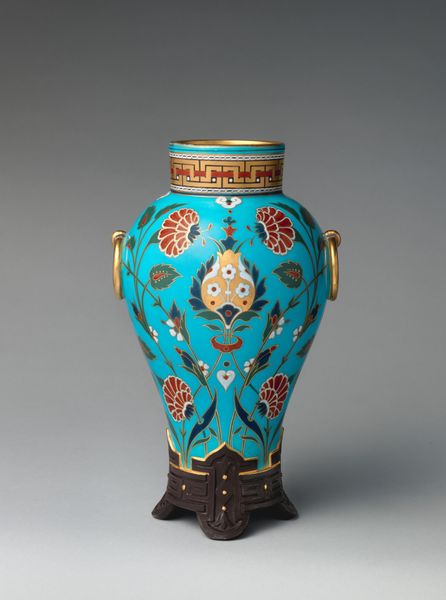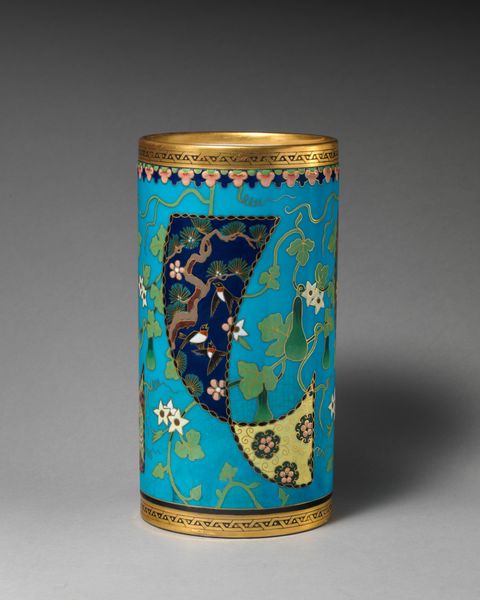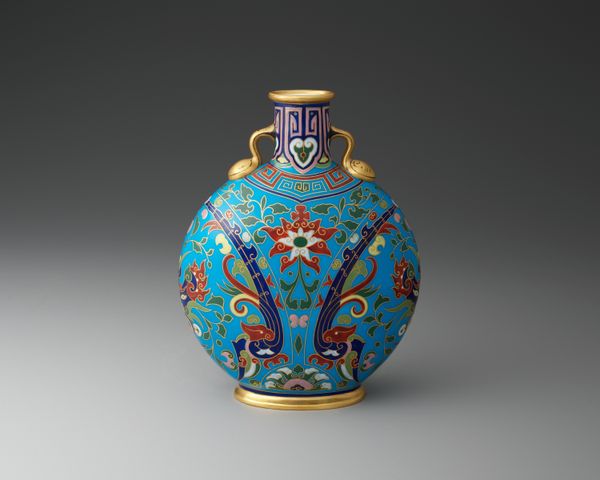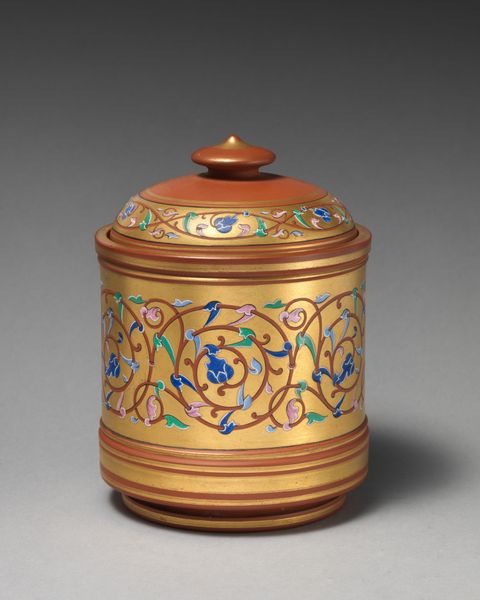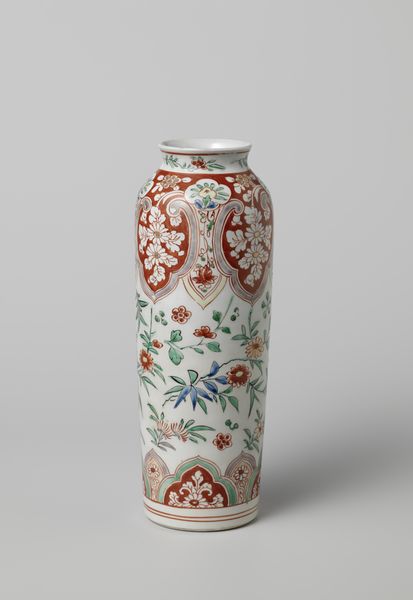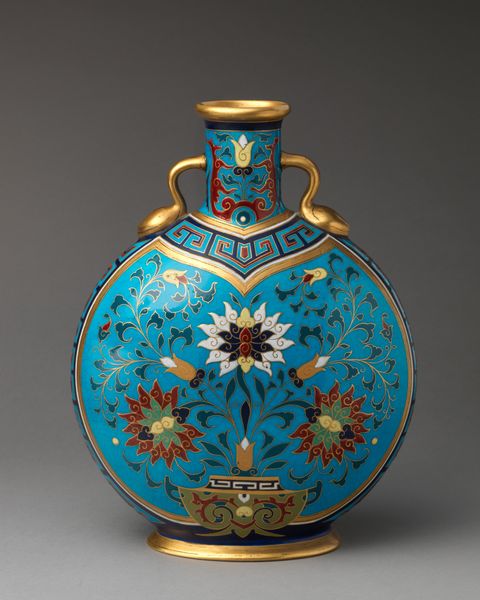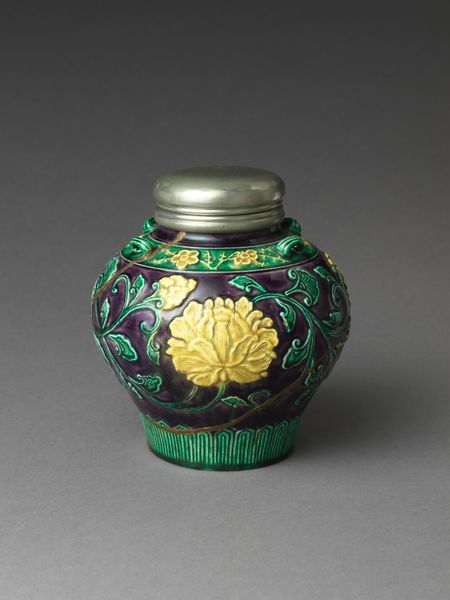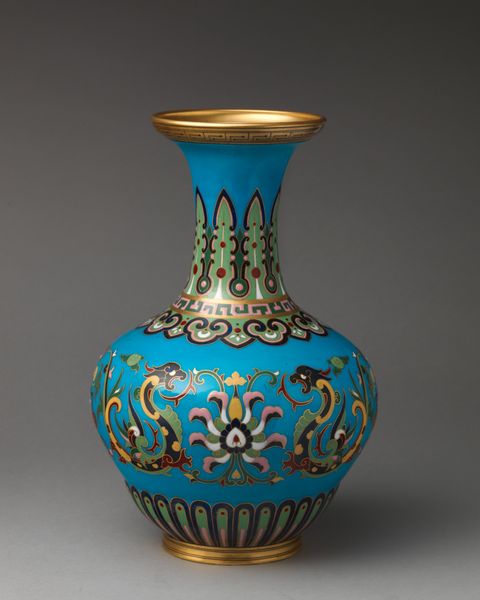
Dimensions: confirmed: 8 3/16 × 4 × 3 15/16 in. (20.8 × 10.2 × 10 cm)
Copyright: Public Domain
Editor: Here we have Minton's Cuboid Vase from around 1870, crafted from ceramic and porcelain. I am struck by the juxtaposition of its rigid geometric form with the delicate floral motifs. What can you tell me about it? Curator: This vase provides a fascinating example of the Arts and Crafts movement's engagement with industrial production. Consider the material – porcelain, typically associated with luxury and fine art. But here, it’s shaped into a mass-producible cuboid form and decorated with repetitive geometric patterns. Editor: So, it's a commentary on industrialization, perhaps? Curator: Precisely. The hand-painted floral details, though seemingly traditional, are constrained within a rigid grid. It raises questions about the role of the artisan in a mechanized world. What kind of labor was involved? Were these vases produced in a factory setting? We have to consider the context and social framework. Editor: That makes me think about the division of labor. Were different craftspeople responsible for different aspects of the vase? Curator: It’s likely. The design and application of geometric forms may have been a separate, specialized process from the painting of floral elements. Investigating factory records would offer insight. The value we place on “fine art” versus “craft” is challenged when we examine these modes of production, and also the distribution and the market, in that epoch. Editor: So by examining the material processes, we can see how social hierarchies played out even in decorative objects? Curator: Absolutely. This vase embodies tensions within Victorian society. It speaks to the aspirations of the Arts and Crafts movement and their struggle with how best to improve industrial design and manufacture and with the systems of commerce within a modern market. Editor: That's given me a whole new way to look at decorative art. I would not have seen so much by simply admiring its apparent "beauty". Curator: Exactly! It's by tracing its production, distribution and labor implications, that we understand an art's purpose.
Comments
No comments
Be the first to comment and join the conversation on the ultimate creative platform.
